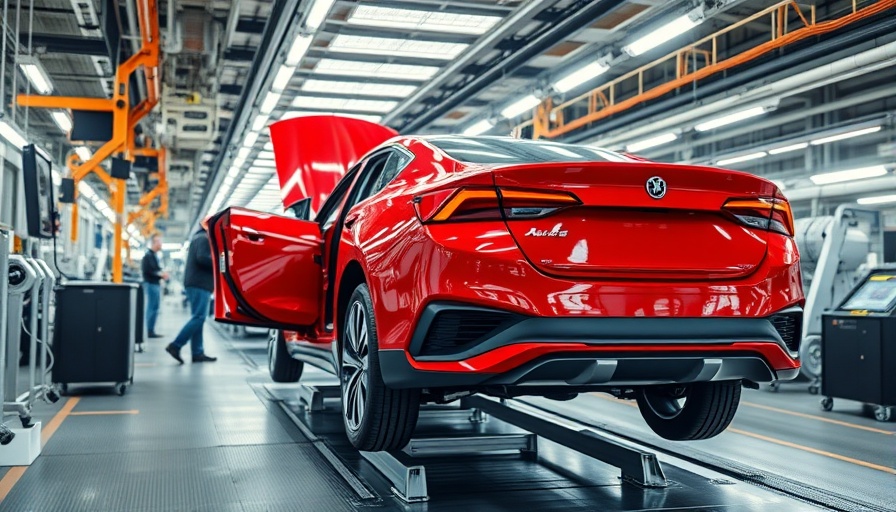
Asian Automakers Resilience Amidst Tariffs
In a striking turn of events, Asian automakers are making significant investments in the United States, a move that may seem counterintuitive in light of ongoing tariff debates. Leading manufacturers like Toyota, Honda, and Hyundai have committed billions to expand their operations here, demonstrating not only a belief in the American market but also a strategic pivot toward hybrid and electric vehicles.
The Drive for Hybrid Cars: A Mega Trend
As the automotive industry shifts towards sustainability, hybrids are gaining a foothold in the market. Data shows sales of hybrid vehicles surged, making up a growing portion of the automotive landscape. With their dual-function capability, hybrids are positioned to appeal to eco-conscious customers and those hesitant to fully commit to electric vehicles.
Strategic Investments and Local Partnerships
Despite the potential challenges posed by tariffs, the influx of Asian investments is revitalizing local economies across the U.S. These investments translate to new manufacturing plants, job creation, and enhanced R&D initiatives. For instance, Toyota's recent announcement of a multi-billion dollar investment in a new big plant in Texas is expected to generate thousands of local jobs.
The Bigger Picture: Global Market Dynamics
Understanding the current automotive climate requires looking beyond tariffs. In recent years, the car market has seen an upsurge in electric vehicle production, driven primarily by stringent emissions regulations worldwide. The largest automobile industry in the world is not just reacting to tariffs; it is also leaning heavily into innovative products and green technology, ultimately reshaping the automotive ecosystem.
Impressive Commitment to Sustainability
Brands such as Hyundai plan on transitioning to eco-friendliness, backed by a pledge to produce more electric vehicles. The turbocharging of electric ambitions includes further research and development, a commitment making these brands less susceptible to fluctuations brought about by trade policies. Indeed, this strategic direction can be seen as a long-term survival tactic.
Counterarguments: A Risky Bet?
Although the strategy appears robust, some experts warn of the inherent risks tied to this commitment. Rising costs of raw materials and shifting consumer preferences may pose a challenge for these brands, questioning whether their long-term investments will yield expected returns. The competitive landscape is more heated than ever with emerging electric vehicle producers while traditional manufacturers race to catch up.
Consumer Insights: What Lies Ahead?
The evolving tastes and preferences of consumers in the U.S. provide another layer of complexity. Young buyers increasingly prioritize sustainability and innovative technology. For Asian automakers, understanding these nuances is critical to their success. Engaging with customers through compelling narratives around their hybrid vehicles could make a difference in attracting new customers.
Conclusion: Potential Future Directions
The automotive industry is at a crossroads, marked by growth opportunities fueled by innovation and the simultaneous threat of trade issues. As Asian automakers double down on their American investments, they will need to be adaptable, with a keen eye on changing market dynamics. It is imperative for these brands to balance their strategic investments with ongoing assessments of emerging trends and challenges.
This blend of risk and opportunity will define their path forward in what remains the biggest car industry in the world.
 Add Row
Add Row  Add
Add 




Write A Comment